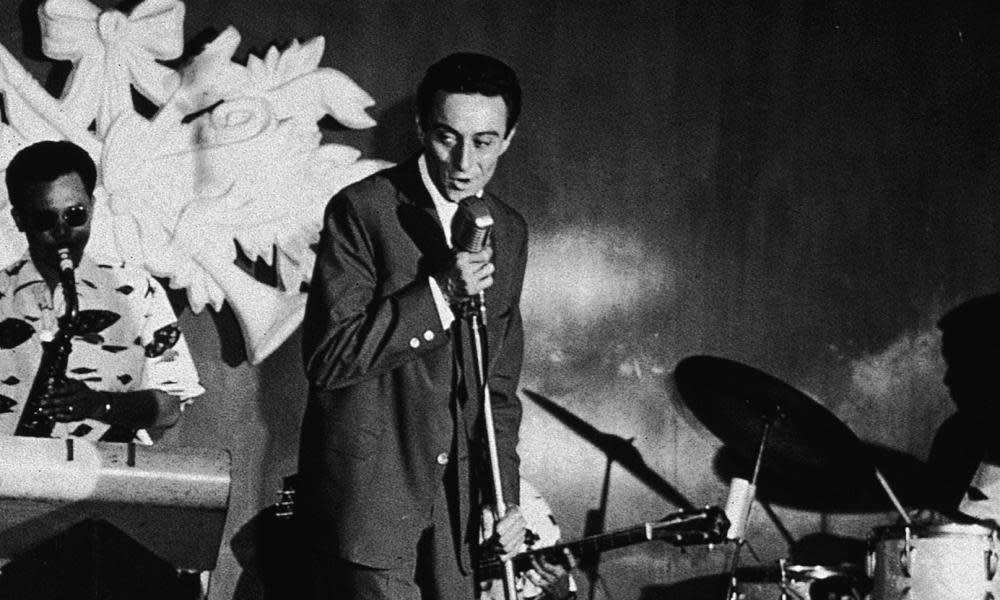Lenny Bruce is Out Again review – the sound of distilled provocation

He may be the least listened-to of standup icons. No one denies Lenny Bruce’s significance: he’s listed third among Rolling Stone’s greatest ever comics – while acts one and two (George Carlin and Richard Pryor) pegged him as their biggest influence. But does anyone listen to him any more? And is he still funny? The US standup Patton Oswalt wrote on the 50th anniversary of Bruce’s death that any comics claiming to find him funny were lying. Four years on, we have another opportunity to investigate with the official release of Lenny Bruce is Out Again.
It won’t change the conversation; Oswalt will not be clutching his aching sides. The fact that Bruce pressed the disc himself for sale at his gigs is evident: there’s no introduction, the tracks are spliced crudely and in no coherent sequence, the sound quality isn’t great. Nor do the recordings deliver standup fully formed – if that means punchlines and well-crafted jokes. Bruce part-improvised his shows, flitting between sketch, monologue and free association. Standup as a truth-telling art form may emerge from this brew. But these are just the first steps.
Then there’s the fact that, frankly, it’s not always clear what Bruce is on about. That’s partly because we’re listening, 60 years later, to a standup who mainlined the culture of his day (among other substances). It’s also because he speaks fast, in a chewy New York Jewish accent, in a jazzy rhythm – a hepcat jive that made him America’s most exciting comedian as the 60s dawned.
Related: Jerry Seinfeld: 23 Hours to Kill review – sublime standup from Mr Generic
The sense that something electrifying is happening in the room sustains the show. Bruce’s smirk is audible as he zeroes in on this or that taboo. Of course, we know that this is the only comedian ever jailed for his words (in America, at least). But listening to Out Again, you can hear why he wound people up. This is the sound of distilled provocation. His country’s hypocrisies on race, religion and obscenity were scabs Bruce couldn’t help picking at. You hear a voice that wants to make something bleed.
Some celebrated routines feature. “To is a preposition, come is a verb” would be an extraordinary skit even now, a needling spoken-word incantation – like Ivor Cutler gone bad; or Hans Teeuwen at his tawdriest – prising back the language and experience of orgasm from the smothering of polite silence. Something similar is at play with “Is there a n***** in the room?” It’s not a word we want to hear a white comedian bandying about now, yet it’s still possible to admire this uncomfortable routine in which gleeful repetition takes the sting out of racial epithets – those against Bruce’s identity as well as others’.
But admiration isn’t amusement. I suspect we’d all be laughing more if we were back there in the room with him. Poor-quality audio only takes you so far. But even then – with apologies to Oswalt – I found myself laughing at several tracks here. Like when Bruce mocks the phrase “dirty toilet humour” by saddling toilets with characteristics other than dirty (“It could be a communist toilet”) or wonders whether “tits and ass” shows in Vegas would be more acceptable if billed “gluteus maximus and pectoralis majors nightly!”
Out Again isn’t just a primary source for historians of countercultural comedy, it raises a smile too.

 Yahoo News
Yahoo News 
